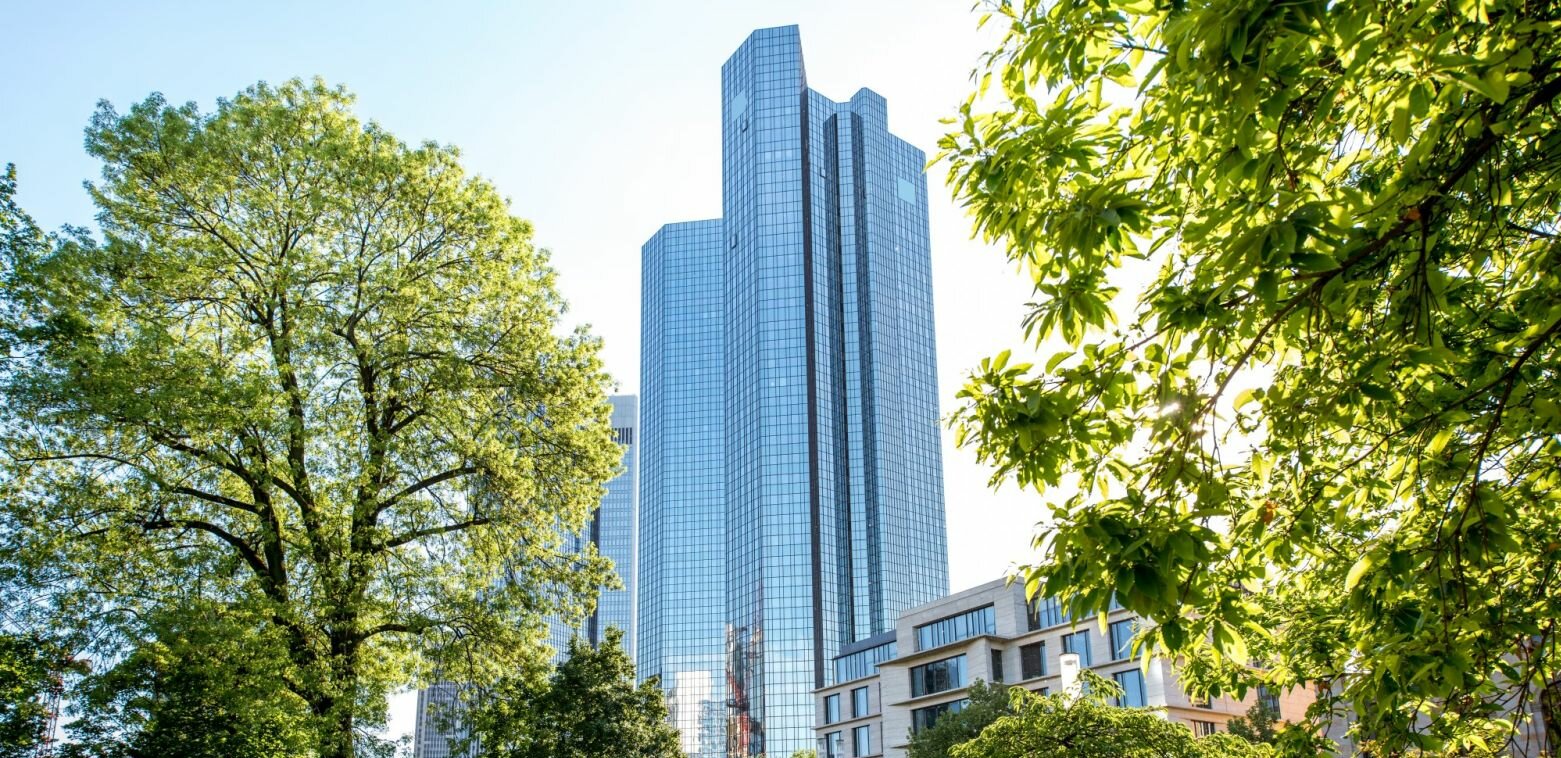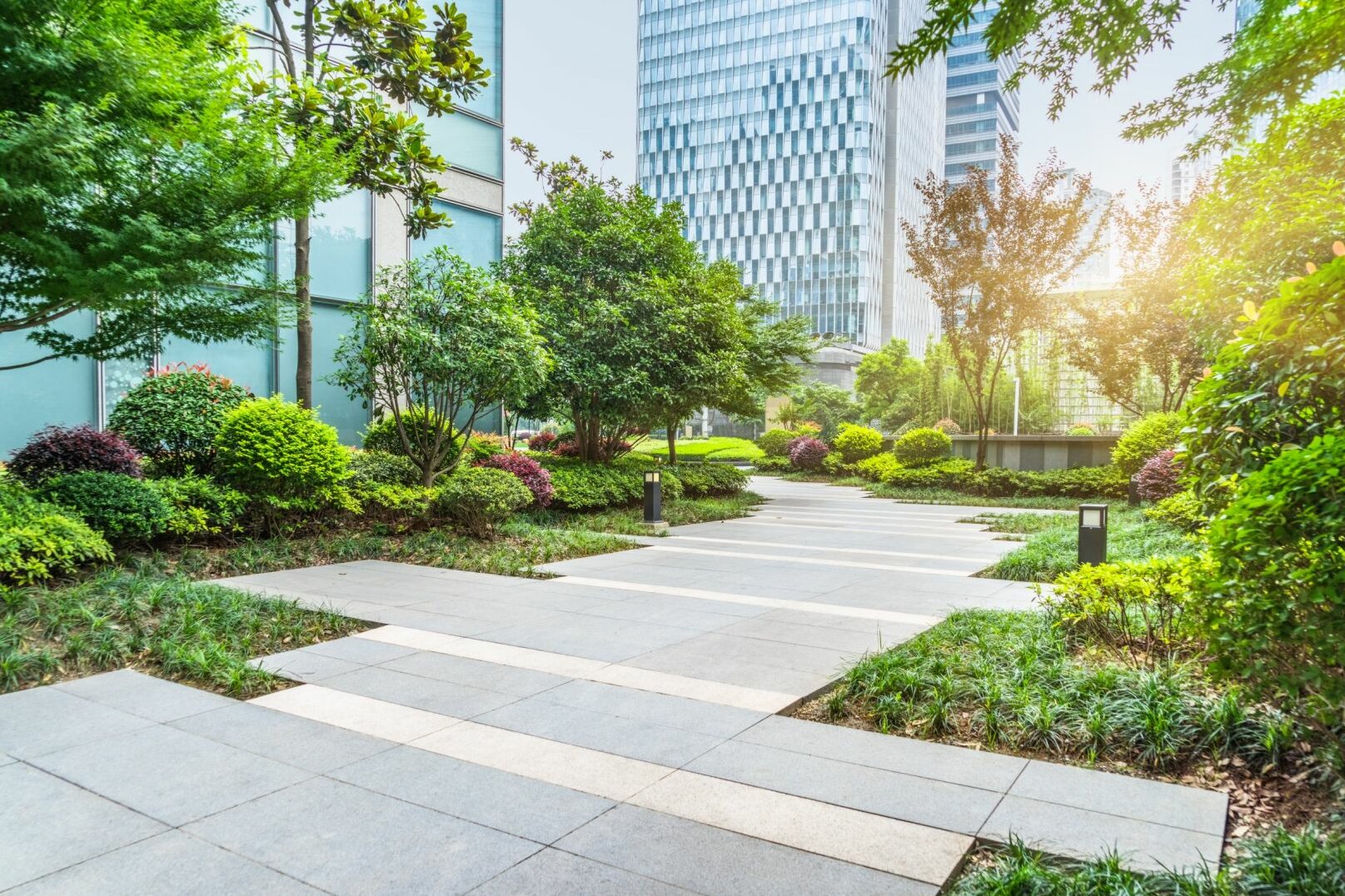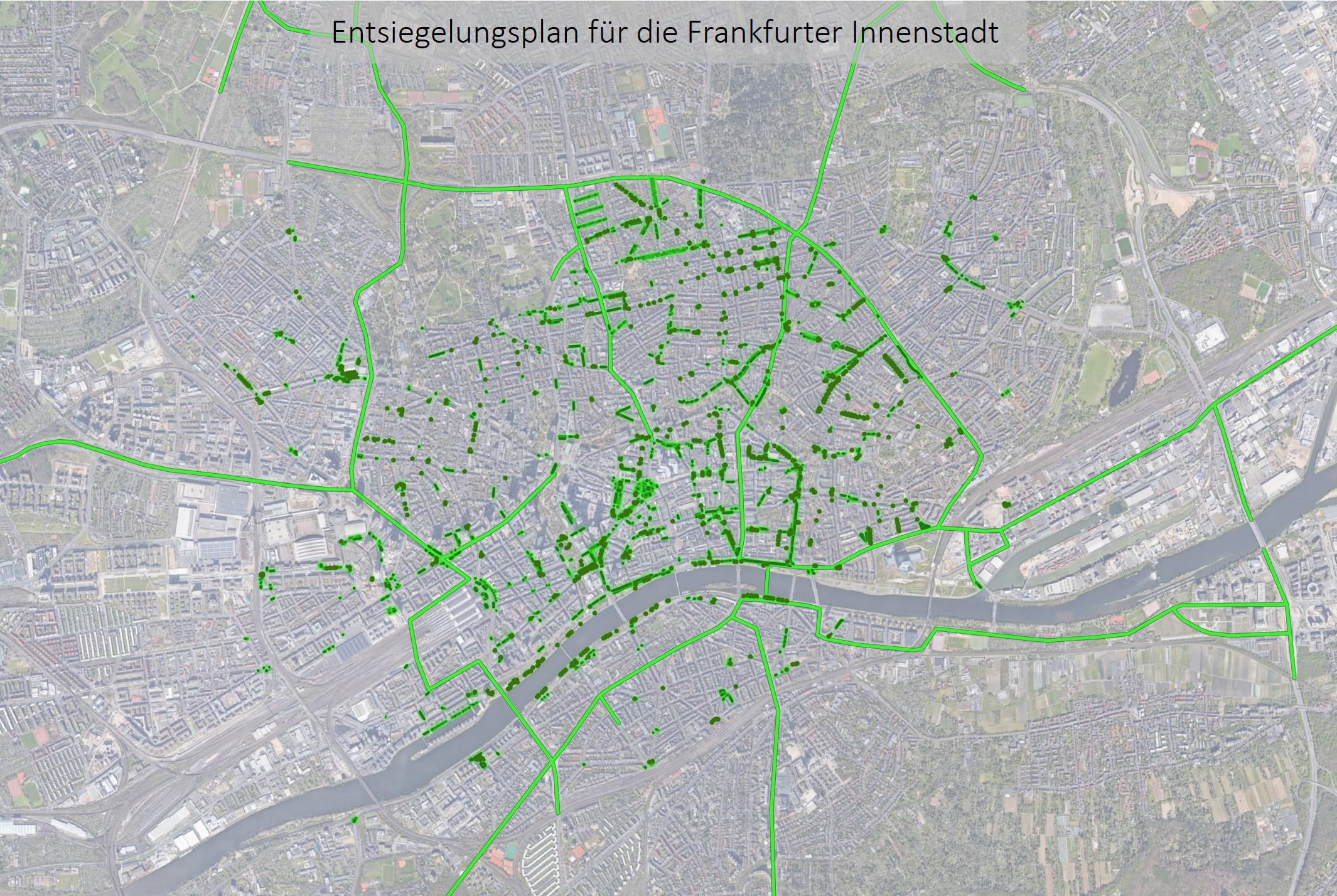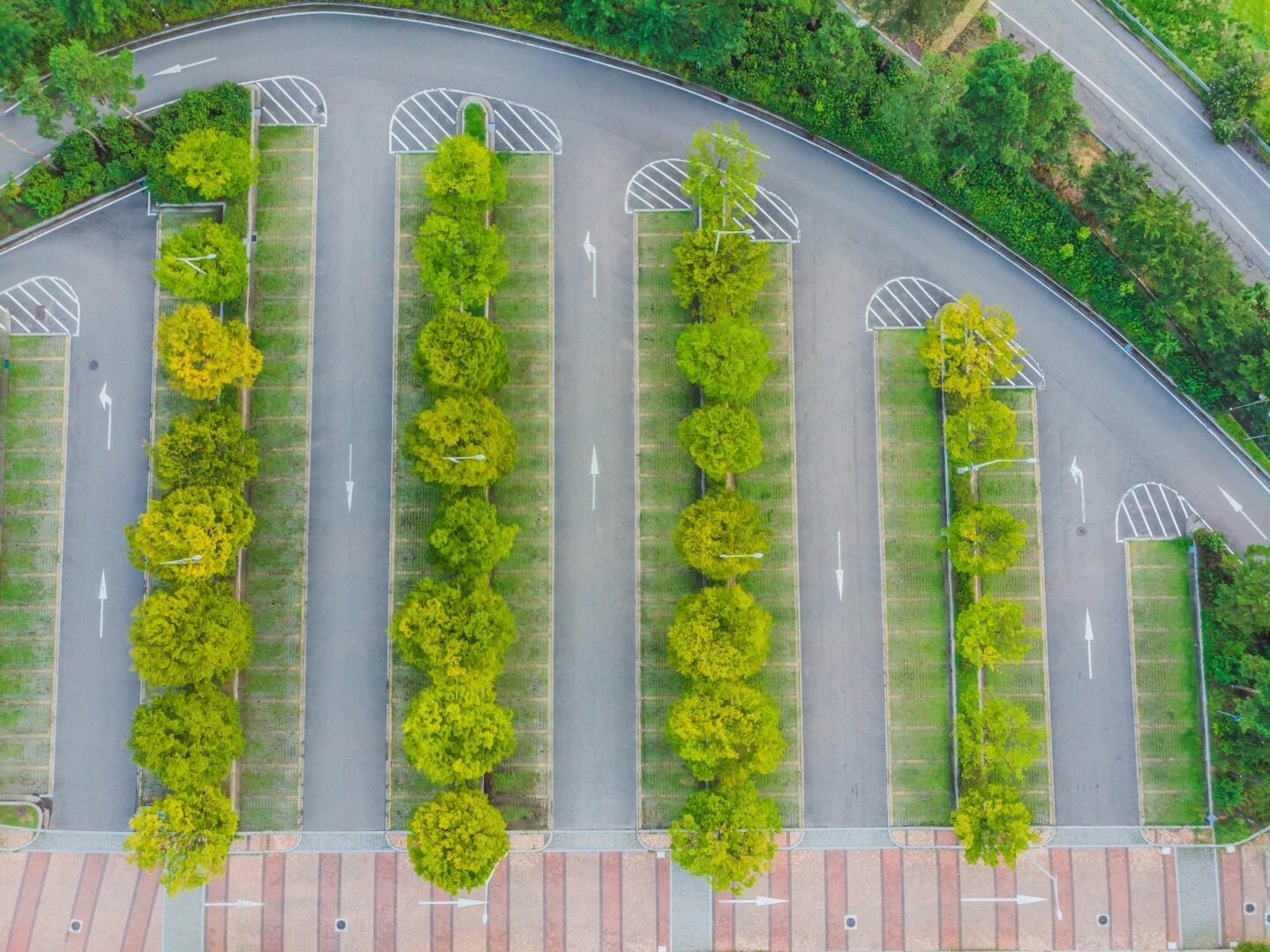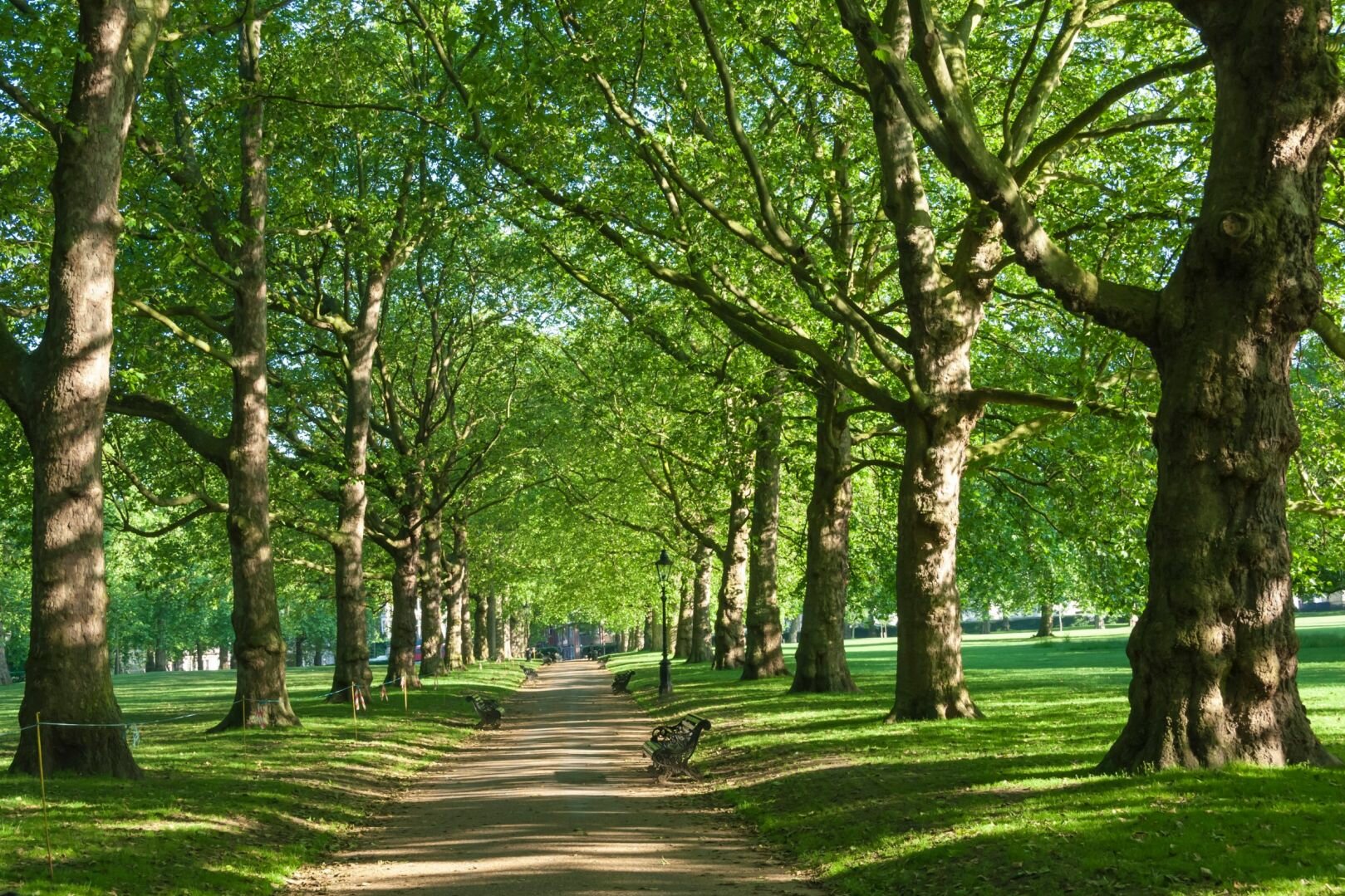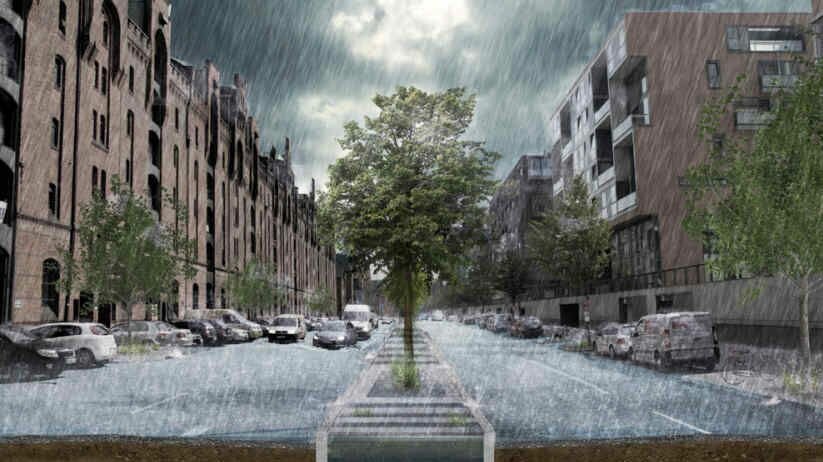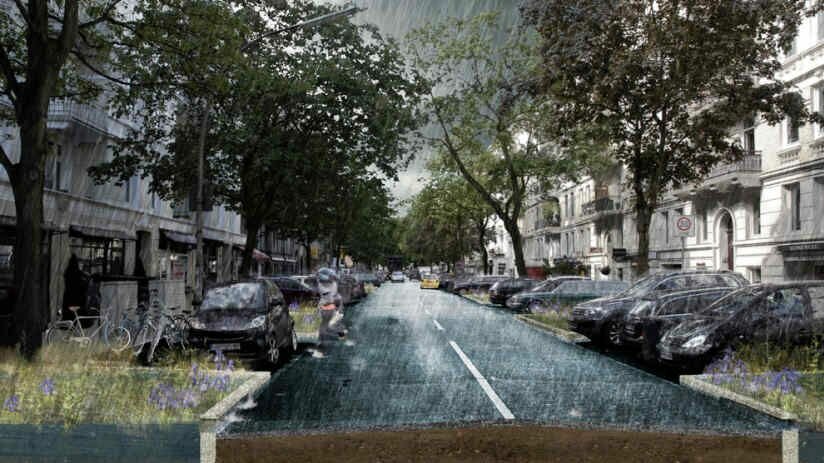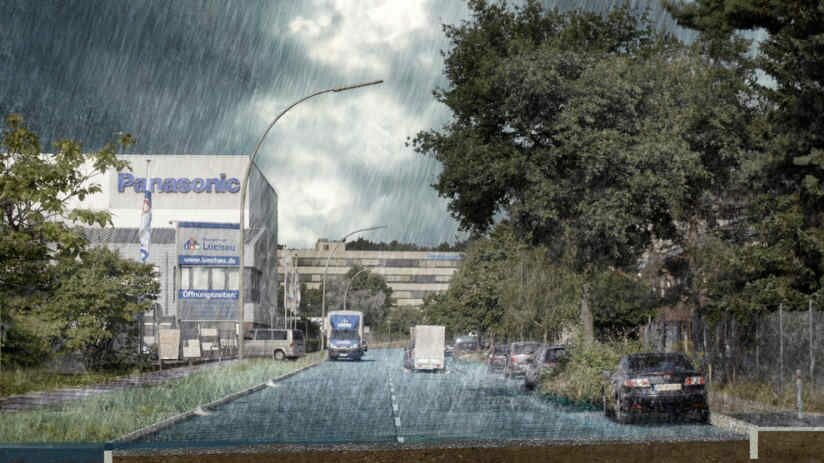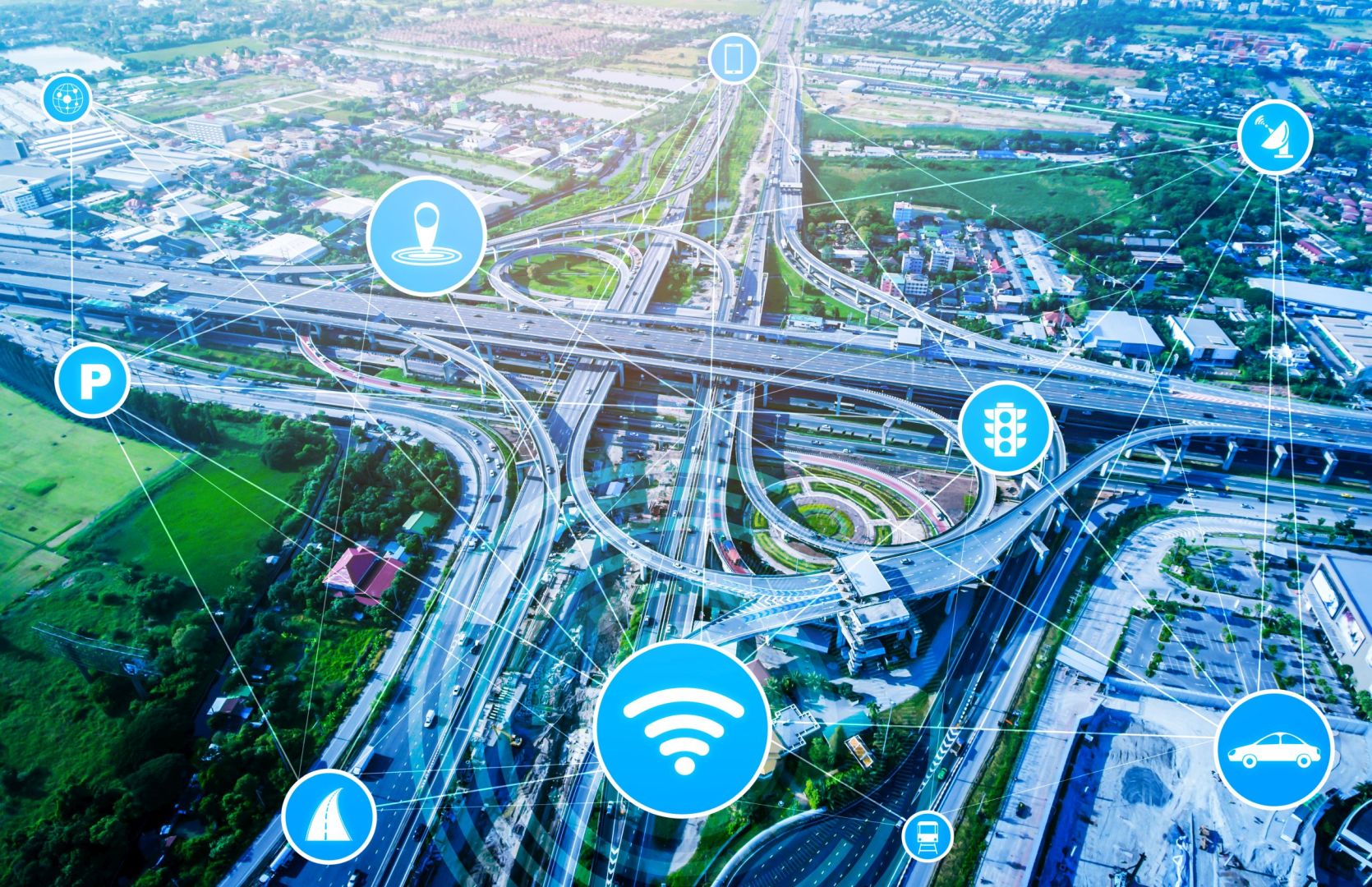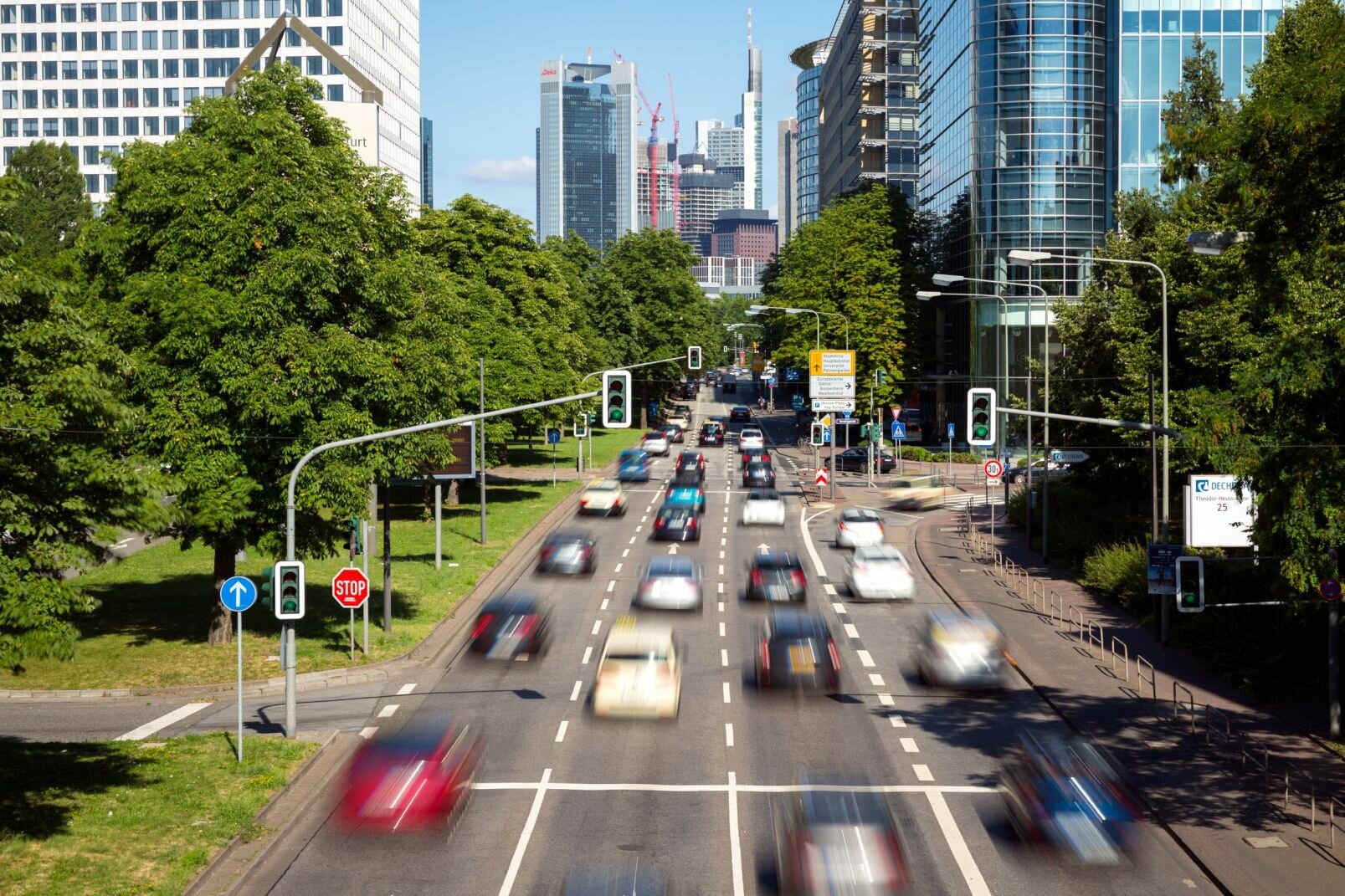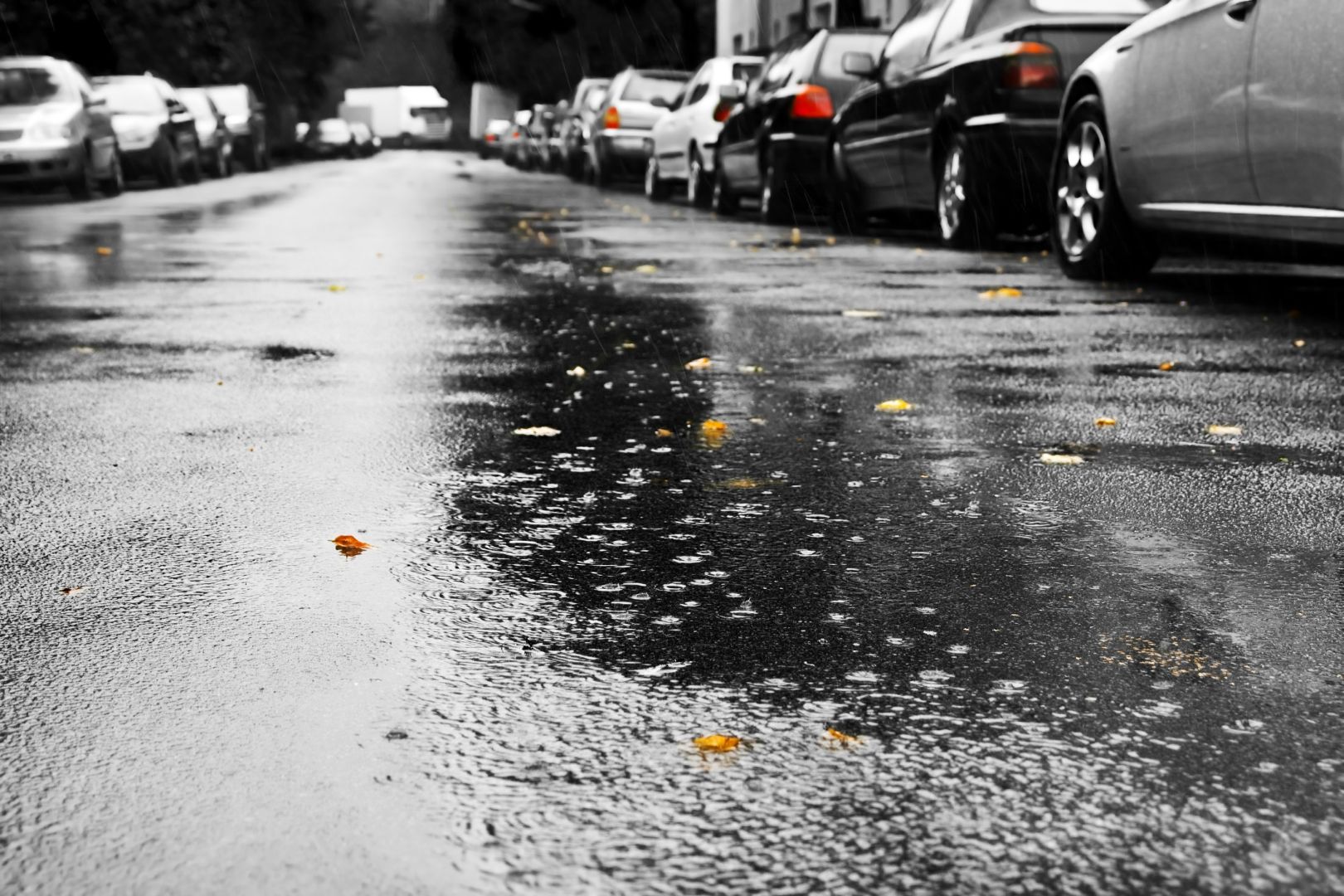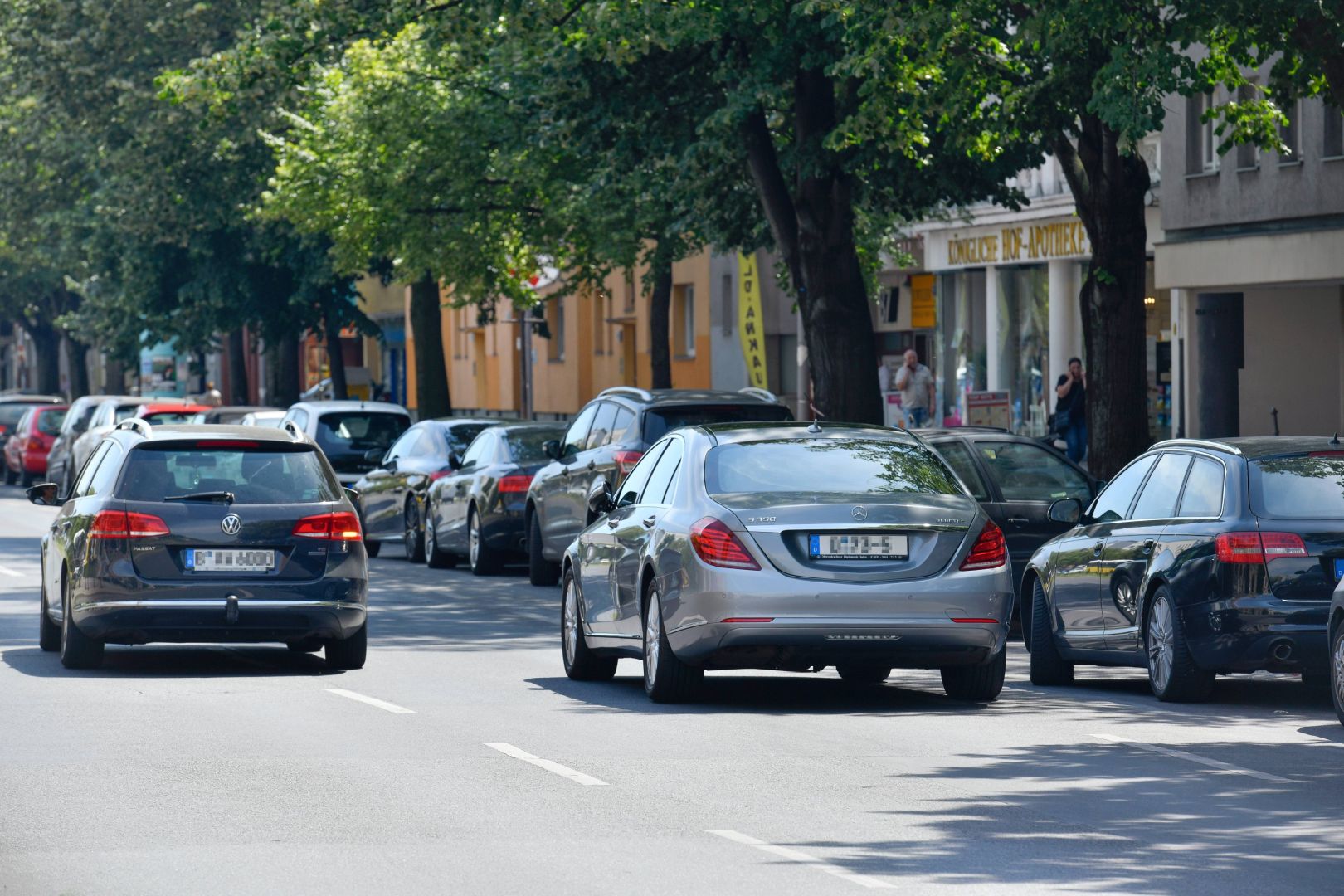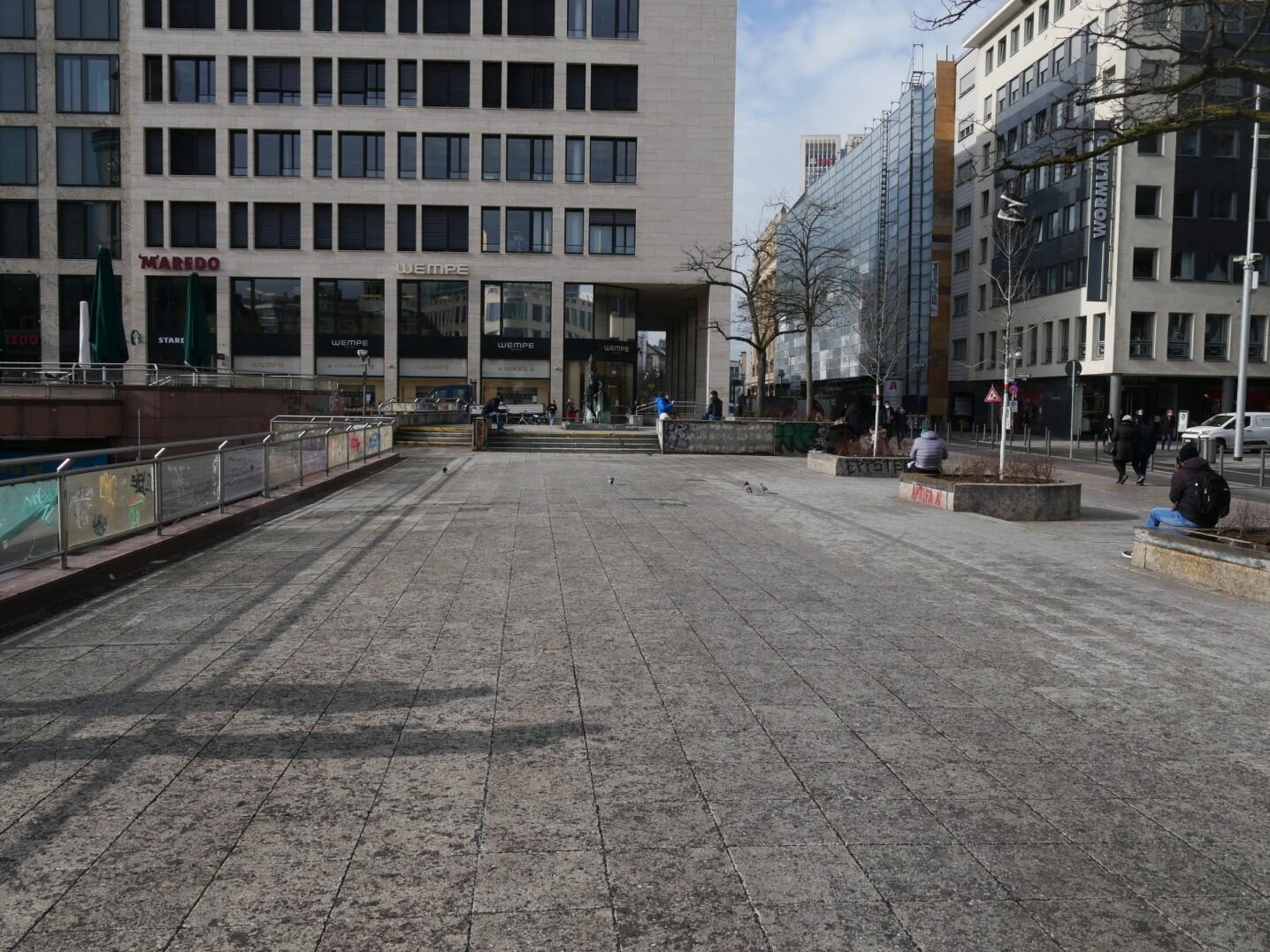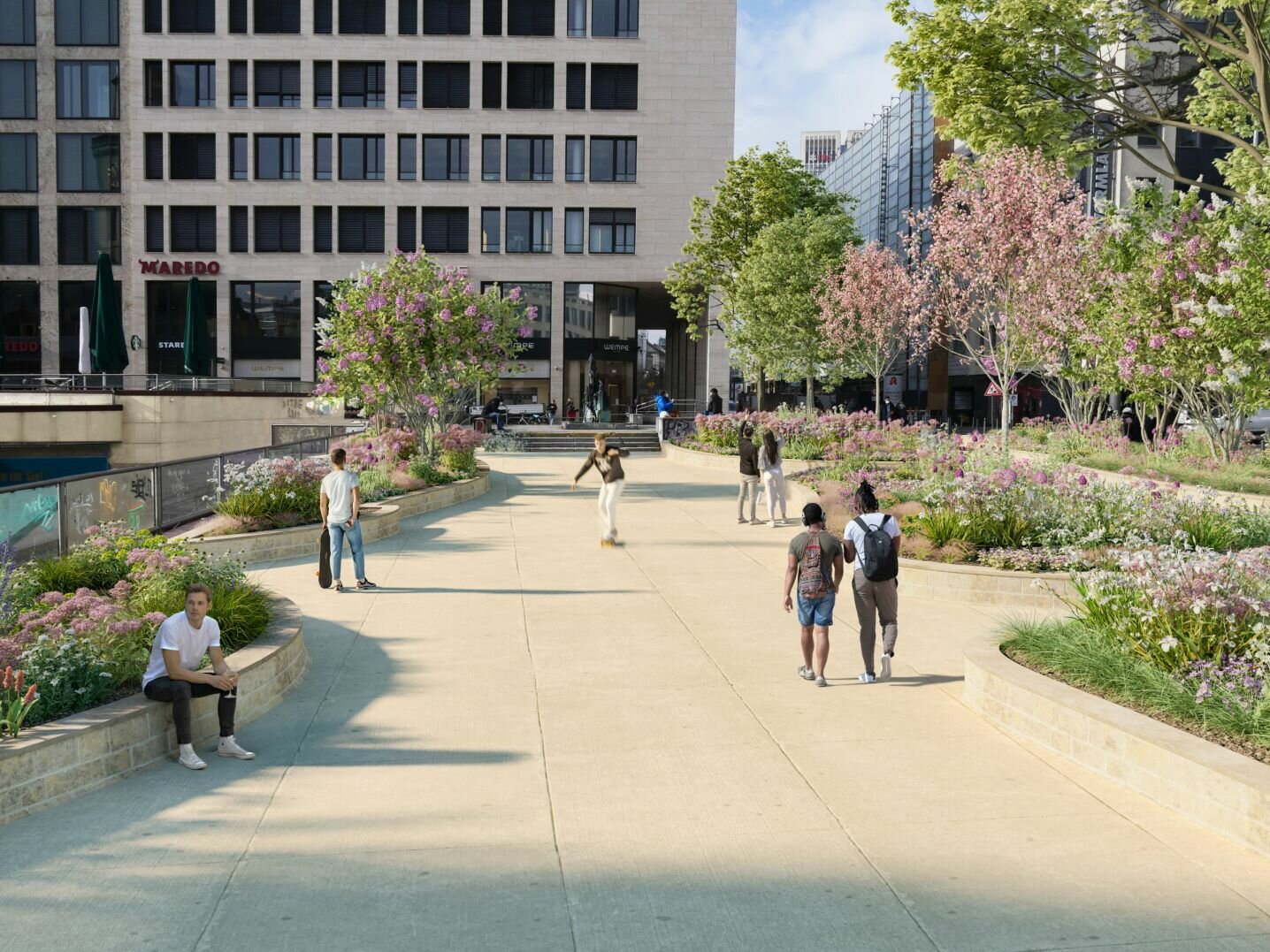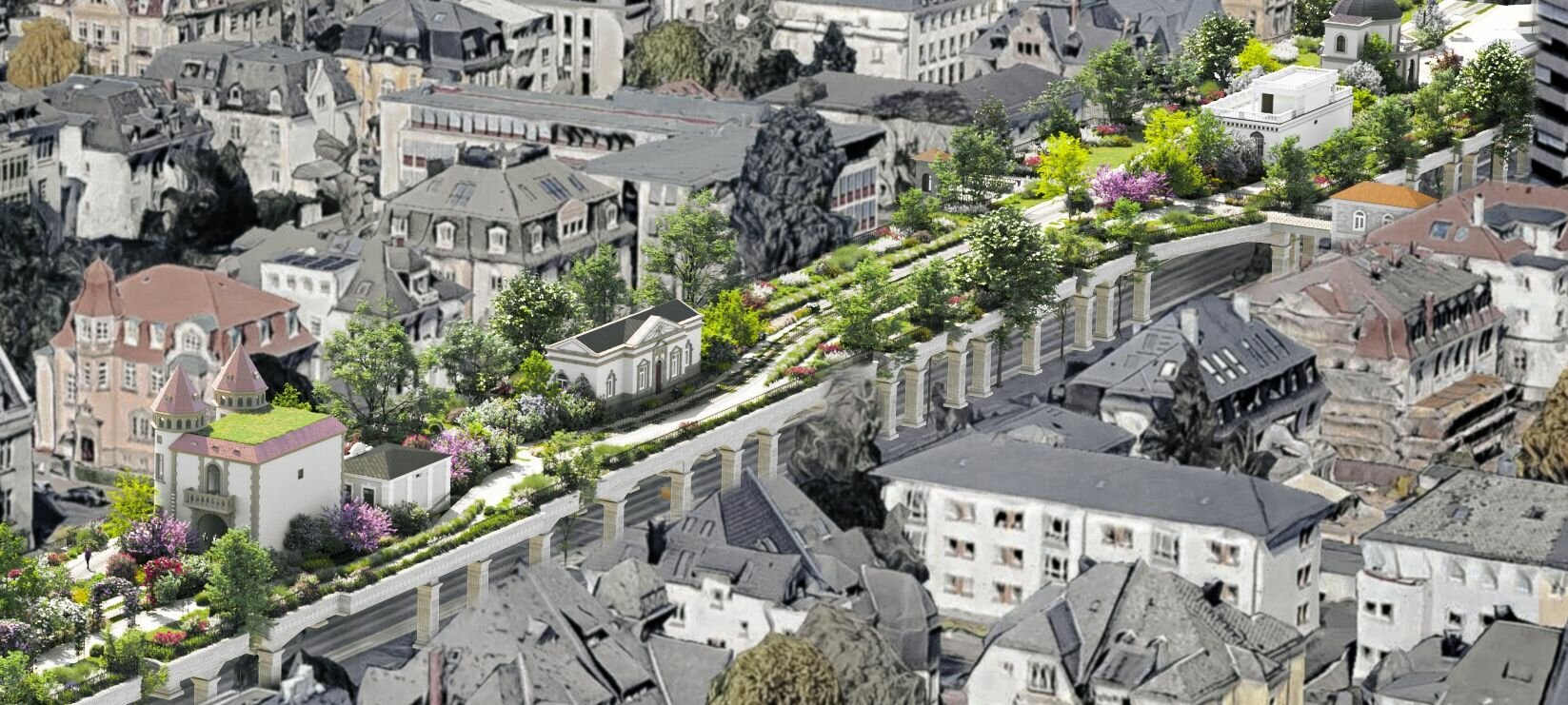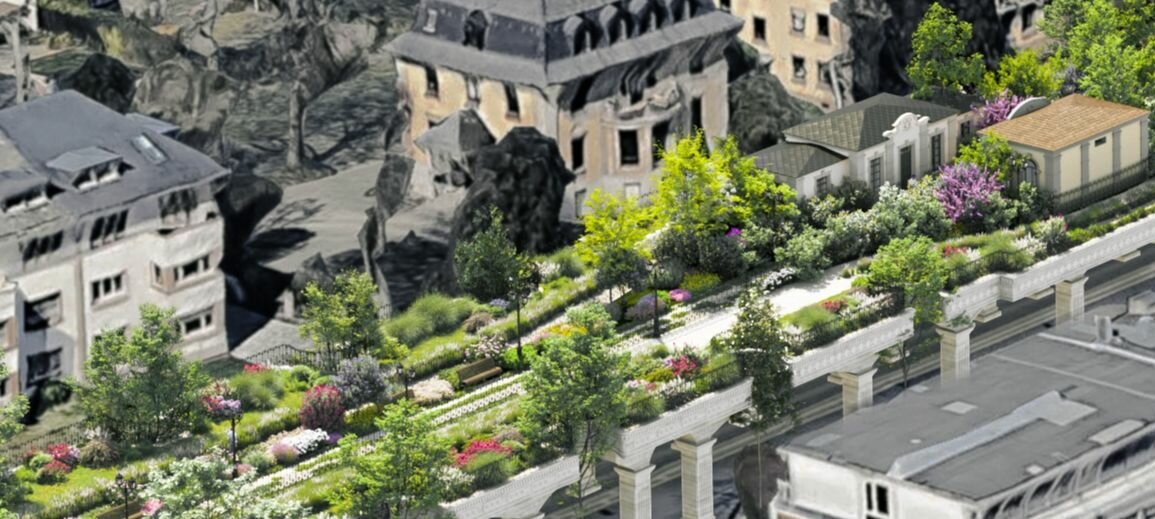Chapter content: The chapter describes the package of measures that will be implemented in the bridge context to improve the urban climate
The most important bundle of measures deals with the unsealing and planting of areas in the city, as well as the irrigation of already existing, undersupplied green areas.
By pushing autonomous traffic concepts, a large part of the parking spaces in Frankfurt will no longer be needed in the future - and will thus be available for further unsealing and greening measures as well as tree planting.
Many areas next to the Frankfurt bridges are also designed to be as brightly coloured as possible, so that they heat up less in the summer.
